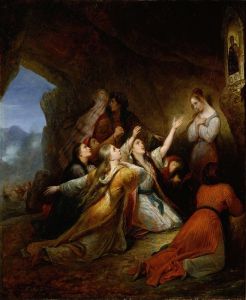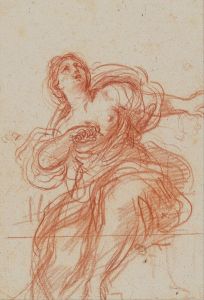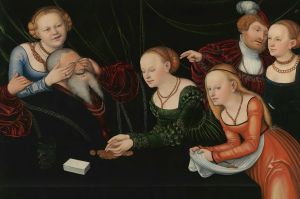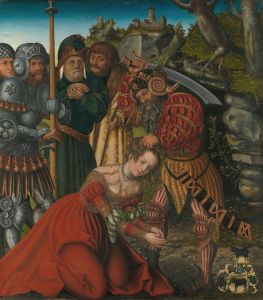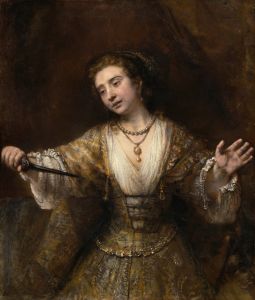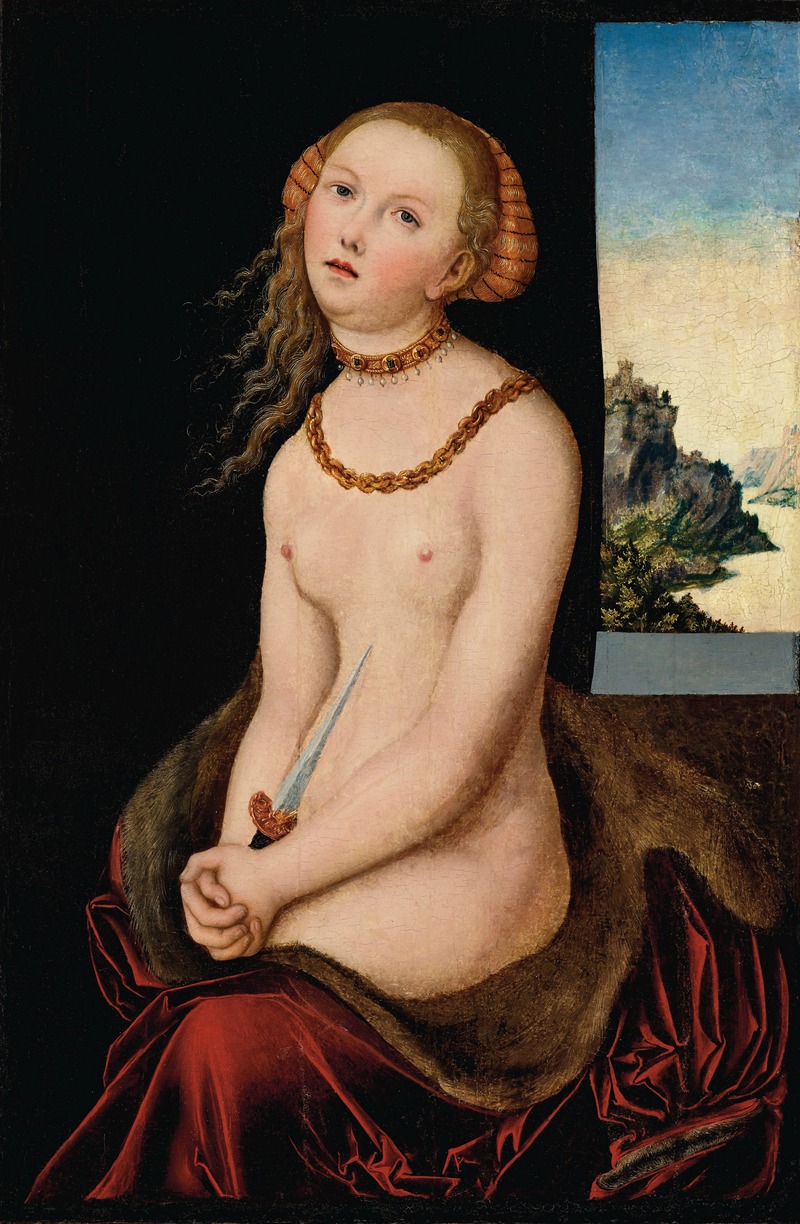
Lucretia
A hand-painted replica of Lucas Cranach the Elder’s masterpiece Lucretia, meticulously crafted by professional artists to capture the true essence of the original. Each piece is created with museum-quality canvas and rare mineral pigments, carefully painted by experienced artists with delicate brushstrokes and rich, layered colors to perfectly recreate the texture of the original artwork. Unlike machine-printed reproductions, this hand-painted version brings the painting to life, infused with the artist’s emotions and skill in every stroke. Whether for personal collection or home decoration, it instantly elevates the artistic atmosphere of any space.
Lucas Cranach the Elder, a prominent German Renaissance painter, created several works depicting the story of Lucretia, a legendary figure from ancient Rome. One of his notable paintings, "Lucretia," exemplifies his mastery in portraying delicate human emotions and his skillful use of color and form. Cranach's "Lucretia" paintings are part of a broader tradition in Renaissance art that sought to explore themes of virtue, honor, and the tragic consequences of moral corruption.
The story of Lucretia originates from Roman history and literature, where she is celebrated as a paragon of virtue and chastity. According to legend, Lucretia was a noblewoman who was raped by Sextus Tarquinius, the son of the last king of Rome. In the aftermath of this violation, Lucretia took her own life, an act that spurred a revolt leading to the establishment of the Roman Republic. Her story was widely known and served as a moral exemplar during the Renaissance, symbolizing the virtues of chastity and the grave consequences of dishonor.
Cranach's depiction of Lucretia typically presents her in a moment of contemplation or just before her tragic end. The artist captures her beauty and vulnerability, often portraying her partially nude, which was a common practice in Renaissance art to highlight the purity and victimization of the subject. The expression on Lucretia's face is usually one of sorrow and resolve, reflecting her inner turmoil and the gravity of her decision.
Lucas Cranach the Elder was known for his ability to convey complex emotional states through subtle facial expressions and body language. In his "Lucretia" paintings, he employs a delicate balance of color and light to enhance the emotional impact of the scene. The use of soft, warm tones and intricate details in the fabric and jewelry further accentuates the elegance and nobility of Lucretia, while also drawing attention to the tragic nature of her story.
Cranach's "Lucretia" paintings are also notable for their composition and the way they engage the viewer. By focusing on Lucretia's expression and the symbolic elements within the painting, Cranach invites the audience to reflect on the themes of virtue, honor, and the personal cost of maintaining one's integrity in the face of injustice. This engagement with the viewer is a hallmark of Cranach's work and contributes to the enduring appeal of his paintings.
The "Lucretia" paintings by Lucas Cranach the Elder are housed in various collections around the world, including prominent museums and galleries. Each version of the painting offers a unique interpretation of the subject, showcasing Cranach's versatility and his ability to adapt the narrative to different contexts and audiences. Through these works, Cranach not only pays homage to a legendary figure but also explores timeless themes that continue to resonate with audiences today.
In summary, Lucas Cranach the Elder's "Lucretia" paintings are significant contributions to Renaissance art, reflecting the artist's technical skill and his deep engagement with moral and philosophical themes. By portraying Lucretia with sensitivity and depth, Cranach creates a powerful visual narrative that honors her legacy and invites contemplation on the nature of virtue and sacrifice.






